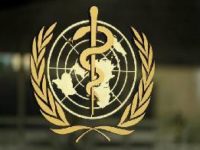
Hypertension is a medial diagnosis of high blood pressure, which is made if the systolic number or the diastolic number stays higher than normal most of the time. Systolic blood pressure is the pressure against artery walls as the heart contracts (or beats) and pushes blood into the arteries. This is the top or first number in a blood pressure reading.
Diastolic blood pressure is the pressure against artery walls between heart contractions. This is the bottom or second number in a blood pressure reading. In this condition, the heart has to pump harder to move blood through the body, adding to the workload of the heart and blood vessels. Hypertension can damage the blood vessels and heart, increasing the risk of stroke, heart disease (including heart attack), and kidney disease.
Individuals in the early stages of high blood pressure generally have no symptoms or warning signals. Contrary to popular belief, headaches or nosebleeds are not usually symptoms of the early stages of high blood pressure. The only reliable way to know if you have or are developing high blood pressure is to have it checked.
Blood pressure goes up and down depending on what you are doing. It may rise during periods of excitement, nervousness, or exercise and decrease during sleep.
If you are between ages 18 and 60, blood pressure should be below 140 mm Hg systolic and 90 mm Hg diastolic. If you are older than 60 without diabetes or chronic kidney disease, blood pressure should be below 150 mm Hg systolic and 90 mm HG diastolic.
Some people experience “white coat hypertension,” when their blood pressure is elevated because of the anxiety of seeing a clinician. In this case, it is recommended that you have a series of blood pressure readings outside of the clinical setting to determine if you are truly hypertensive. The American Heart Association recommends an automatic, cuff-style, bicep monitor for home monitoring of blood pressure. Individuals should monitor their blood pressure at different times throughout the day and discuss their results with their health care provider.
High blood pressure usually cannot be cured, but it can be controlled with proper treatment. Treatment options including changing diet/exercise habits and medications. However it usually requires lifelong medication for those individuals whose blood pressure is definitely abnormal.
If your clinician prescribes one or more medications for you, it is important that you take them regularly (not just when you remember it or feel bad). Controlling high blood pressure can help prevent heart disease, kidney disease and stroke. Discuss any side effects with your health care provider, because many can be prevented by a change in medication dosage or type.
In most cases, actual causes of high blood pressure are unknown. However, there are certain risk factors that may contribute to high blood pressure. Smoking tobacco is the single worst thing that one can do to one’s health, especially for persons with high blood pressure.
Nicotine constricts blood vessels, stimulates the heart and increases the rate at which fatty deposits occur within the arteries. This can increase the destruction of the arteries already caused by high blood pressure. If you smoke, quit.
Being overweight can increase your blood pressure. With each extra pound, the body must increase blood volume and the number of capillaries to supply the fatty tissue. This means that the heart must work harder. Losing weight can lessen this strain on the heart.
Restricting cholesterol and saturated fat may diminish the build-up in the inner lining of the blood vessels. Maintaining a healthy weight permanently requires a change in eating habits, exercise patterns and attitudes.
Excessive sodium intake (mostly as table salt or food additives) may be detrimental to individuals who are sensitive to sodium or who have a history of high blood pressure. These individuals should examine food labels carefully, avoid salty and processed foods and use herbs and seasonings for flavor rather than salt.
Regular physical exercise may decrease the rate of fatty deposit build-up on the artery walls, strengthen the heart and reduce heart rate and blood pressure. Physical activity that is rhythmic and repetitive (such as brisk walking, jogging, bicycling, swimming, cross country skiing and jumping rope) are best for building cardiovascular fitness.
Studies have shown that consumption of as little as two drinks a day can have a harmful affect on blood pressure. Blood pressure levels are correlated among families. This can be attributed to genetics, shared environment or lifestyle factors. If either or both of your parents have high blood pressure, you are at greater risk of developing it, so get your blood pressure checked.
Credit:
World Health Organization (WHO)
University of Michigan Health Service
Dr. Osei Boaitey
Institute of Qualitative Methodology
University of Alberta, Canada
osei.boaitey@yahoo.com
What do you think about this piece? Share your comment in the comment thread and share the story using the social media buttons above. You may reach the editor on 0249579664. Thank you.





